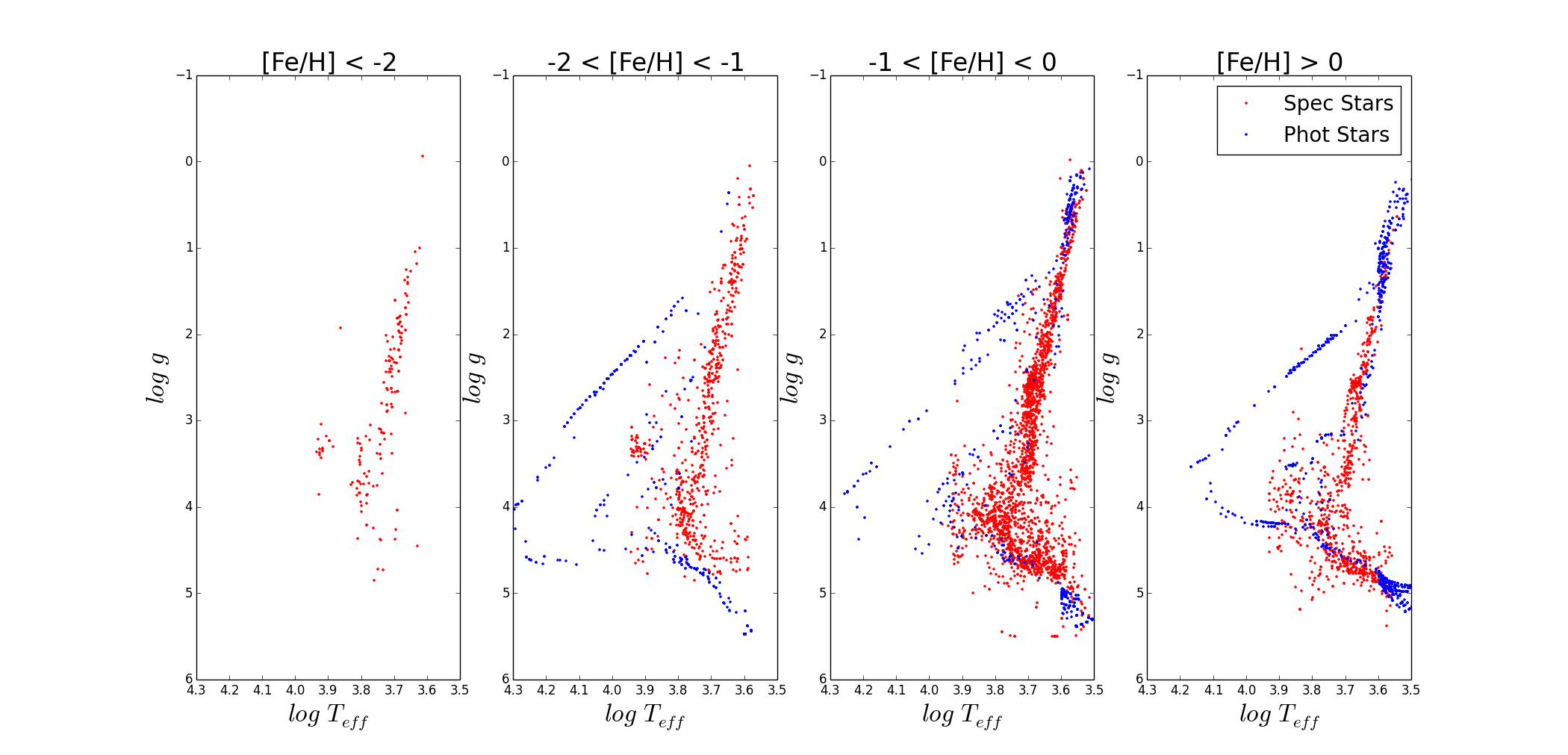MaStar Target Selection
Target selection for MaStar is a multi-tiered process that uses spectroscopically and photometrically determined parameters from previous catalogs to ensure that MaStar provides complete coverage in stellar parameter space (Teff, log(g), [Fe/H], [α/Fe], etc.). Broadly speaking, the aim of the target selection process is to avoid undersampling rare stars and avoid oversampling common stars. In order to do this, we make use of a statistical weighting scheme that favors targets based on the number of stars with similar parameters available in MaStar’s footprint (i.e., “neighbors” in parameter space). Target candidates with fewer neighbors are favored over those with many neighbors. This inverse-density based weighting scheme is continuously adjusted over the course of the survey to give higher priority to under-dense regions of the parameter space.
Additionally, candidate targets are prioritized based on the reliability of their source parameters. In general, spectroscopically determined parameters (selected from APOGEE, SEGUE, and LAMOST) are much more accurate, and are favored over those that only have photometrically-determined parameters (selected from APASS and PanSTARRS1). Selection of targets with spectroscopically determined parameters is further optimized by prioritizing based on additional details of their source catalogs, such as spectral resolution, flux calibration, etc. In general, this means that APOGEE is favored over SEGUE, and SEGUE is favored over LAMOST.
In fields where stars with spectroscopically determined parameters are not available, stars with photometrically determined parameters are used to patch the hot and cold ends of the parameter space. This is necessary due to certain range restrictions of the spectroscopic catalogs.
In order to ensure sufficient signal-to-noise (S/N) and avoid saturation, we only accept targets ranging between 12.5 and 17.5 in either g-band or i-band. We also rule out stars with nearby neighbors on sky to eliminate contamination from brighter sources. These limits are imposed by using photometry and astrometry from APASS and PanSTARRS1 for every target (regardless of the source parameters used for the selection process discussed previously).



